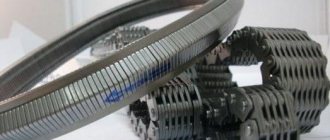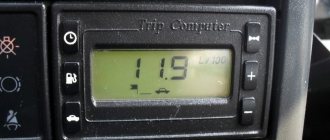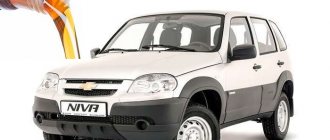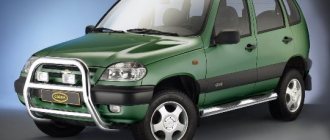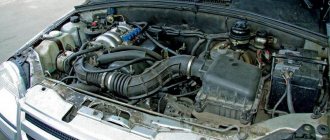01/21/2022 71,743 Nissan X-Trail
Author: Ivan Baranov
More than ten years have passed since CVT transmissions began to be installed on Japanese-made Nissan cars. But time does not stand still and neither does progress. More and more motorists prefer vehicles with a CVT transmission. If you decide to purchase a CVT for a Nissan X Trail, it’s better to immediately read the owner’s reviews online - you’ll learn a lot of new things.
[Hide]
CVT model RE0F10A
Since 2007, it decided to equip X-Trail SUVs with CVT-type gearboxes. The first generation T31 body was equipped with a Jatco RE0F10A variator (aka CVT-7).
Its power is designed for engine capacity from 1.6 to 2.5 liters. Such data is provided by dealerships. However, the Jatco website indicates slightly different volumes - from 1.6 to 1.8 liters. If the CVT-7 is really designed for small cars, then it becomes clear why it is so difficult for it to work out its service life without breakdowns.
The torque of small cars reaches a maximum of 180 Nm, while engines with a volume of 2 liters or more produce from 200 Nm. The variator cannot cope with such a load.
Aggressive driving creates the need for abrupt shifting between gears, and since the design of the variator has many rubbing joints, its wear accelerates significantly. So a lot depends on how the car owner uses the CVT on the Nissan X-Trail.
Technical characteristics of X-Trail T32
The X-Trail T32 can have three engines, as in the previous body: two petrol 2.0 MR20DD, 2.5 QR25DE, one diesel 1.6 R9M.
The heavy fuel engine is the only one available with all-wheel drive and a manual transmission. But the 1.6 R9M is only available in this configuration.
2.5 engine under the hood of the X-Trail T32
The 2.0 MR20DD petrol power plant was combined with a manual or automatic transmission, but the manual transmission is only with front-wheel drive, and the automatic transmission can be 2WD or 4WD.
2.5 QR25DE is only a CVT and all-wheel drive.
Dimensions
The dimensions of the X-Trail T32 have not changed significantly compared to the T31. Only the wheelbase has increased by more than 7 cm. The luggage compartment volume has changed: with the second row unfolded, the luggage compartment is larger in the new generation - 497 liters versus 479, but with the second row unfolded - 1595 and 1773, not in favor of the new body.
Dimensions of X-Trail T32:
- length, height, width (cm) – 464, 182, 171;
- wheelbase (cm) - 270.5;
- ground clearance (mm) – 210;
- weight about 1600 kg, may be less or more depending on the configuration;
- turning radius (m) – 5.6,
- trunk volume (l) – 497 (1585);
- Fuel tank volume – 60 l.
Engines and gearboxes
The 1.6 R9M diesel engine is purchased less often than gasoline engines due to insufficient power on the highway and manual transmission.
X-Trail T32 with a diesel engine under the hood
Characteristics of 1.6 R9M:
- power (hp) – 130;
- torque (N/m) – 320;
- compression ratio 15.4;
- environmental class – Euro-5;
- fuel consumption (city, highway, mixed (l) – 6.2, 4.8, 5.3.
The 2.0 MR20DD petrol engine has been significantly improved when compared to the 2.0 MR20DE X-Trail T31 engine. There were automatic adjustment of valve timing at the intake and exhaust and direct injection.
Characteristics of 2.0 MR20DD:
- power (hp) – 144;
- torque N/m – 200;
- compression ratio – 11.2;
- environmental class – Euro-5;
- fuel consumption with 6-speed manual transmission front-wheel drive (city, highway, mixed l) - 11.2, 6.6, 8.3, with a 2WD CVT - 9, 6.1, 7.1, with a CVT and all-wheel drive - 9.4, 6.4, 7.5.
The 2.5 QR25DE engine also acquired phase adjustment on the intake and exhaust, but the injection remained distributed. Characteristics of the 2.5 QR25DE engine:
- power (hp) – 171;
- torque (N/m) -233;
- compression ratio – 10;
- environmental class – Euro-5;
- fuel consumption with CVT and all-wheel drive (city, highway, mixed l) - 11.3, 6.6, 8.3.
Engine 2.0 petrol under the hood of the X-Trail T32
The Xtronic CVT is a good solution for the city, where it is economical and convenient. Simulated gear shifting is also a plus. But there are questions about its reliability in difficult conditions, but most likely not even the second owner will solve them.
Chassis and all-wheel drive
The X-Trail T32 suspension has not undergone significant changes: MacPherson struts at the front, a multi-link design at the rear, the upper arm is made of aluminum, and the springs and shock absorbers are spaced apart.
X-Trail T32 front suspension
The crossover does not transmit small bumps into the cabin. Deep holes shake the body too much.
Front and rear brakes are, of course, disc.
Wheels, depending on the configuration, can be 215/65R16, 225/65 R17 or 225/60 R18.
The all-wheel drive design has not changed. This is still a plug-in circuit with a coupling. The driver can choose one of 3 modes: automatic - the car decides when to engage the rear wheels, 2WD - single-wheel drive mode for dry surfaces, 4WD - will help overcome light off-road conditions, start on ice, or drive through a snow-covered yard.
X-Trail T32 rear suspension
Safety
If we compare the basic configurations of the X-Trail T32 and T31 in terms of electronic assistants, they will be on equal terms. In terms of safety, the X-Trail T32 with a 2.0 engine and front-wheel drive mechanics with XE equipment has:
- driver, passenger, side airbags and curtain airbags;
- ISOFIX;
- ABS;
- Brake force distribution (EBD);
- Brake Assist (BAS);
- directional stability (ESP);
- Hill start assist (HAC).
Crash test X-Trail T32
In the most expensive version with a 2.5 engine, all-wheel drive and a CVT in the TOP configuration, in addition to the above, there is also:
- electronic hill descent assistant (DAC);
- strip assistant;
- parking assistance;
- front, rear parking sensors;
- blind spot monitoring;
- driver fatigue control.
Green zones - minimum loads in case of an accident, yellow zones - loads within acceptable limits
According to the results of independent crash tests by EuroNCAP, the X-Trail T32 received five stars. But the loads on the chest from the seat belt were found to be higher than permissible, but not critical. In a rear-end collision, second-row passengers may experience cervical spine injuries.
Weak spots
On what elements of the variator on the Nissan X-Trail T31 does its service life depend?
The main load when changing gears is borne by the pulley bearings, the pulleys themselves and the rotation transmission belt from the drive shaft to the driven one. The nuance is that these pulleys are absolutely smooth, and adhesion to the belt occurs only due to friction.
According to owners' reviews, the variator on the T31 generation Nissan X-Trail makes itself felt after 80,000-100,000 km, although the promised resource is 200,000.
The bearings wear out first and begin to emit a characteristic hum. The belt tension depends on them. If the bearing does not cope with its function, the tension force of the belt decreases, it begins to slip, not giving the shafts a signal to change gears. At the first stage of the malfunction, the variator transmission on the Nissan X-Trail “troits” (jerks appear). This happens because the pulleys, turning idle, are deformed, getting scuffed and scuffed.
There is an element on the valve body that regulates the gear ratio - this is a step motor. It “monitors” the position of the accelerator pedal and the driving mode. Information is transferred to the moving elements of the pulleys due to the step motor foot, which is quite fragile and wears out quickly, which leads to the variator operating at only one speed.
Repairing the variator on the Nissan X-Trail T31 is quite problematic: even if there are replacement parts, their price will be unpleasantly high. The service can carry out troubleshooting and draw up an estimate. But if the warranty is still valid, experts recommend replacing the variator with a Nissan X-Trail.
Review of feasibility of repairs
The advisability of choosing between repair and purchasing a new or contract variator is determined by the nature of the breakdown and the general condition of the continuously variable transmission. Thus, if the belt is worn out or damaged, in most cases the unit’s functionality can be restored by replacing worn-out elements. The X Trail CVT uses a Bosch belt, article number 321700B. The price for repairs is 20,000 - 28,000 rubles, subject to doing the work yourself. At a car service center, you will need to pay about 50 thousand rubles to replace the belt.
When the cones wear out, repairs are often comparable to the cost of a new transmission. The set of cones itself with article number 321701 costs from 60,000 to 88,000 rubles. In this case, replacement of the belt and many related elements is often required. Therefore, taking into account the cost of work, the car owner will need to pay 200-250 thousand rubles for repairs.
When a howling and humming noise appears from the variator, it is necessary to take preventive measures to prevent serious consequences. An unusual sound indicates wear of one or more bearings. There are four in total:
- 321228A-EM, costing 4800-6900 rubles;
- 321236A-EM, price 4700-6500 rubles;
- 321229A-EM, costing 3100-3400 rubles;
- 321235A-EM, priced at 3000-3700 rubles.
The step motor has part number 321440B-EM. Its price is 7500-8900 rubles. If its breakdown is caused by overheating during low mileage of the variator, then repair makes sense. If the stepper motor fails after a significant mileage, exceeding 250 thousand km, then it makes sense to think about purchasing a new or contract continuously variable transmission.
Model RE0F10D (CVT-8)
Refinement of the variator type on the Nissan X-Trail CVT-8 made it possible to increase its service life and endurance to aggressive driving style.
The weight of the new transmission was reduced and the oil pump was made more compact. We reduced the friction force of the belt on the pulleys by 40%, thereby reducing the pressure on them. To save fuel, the gear ratio was changed in steps.
According to reviews from owners about the variator on the Nissan X-Trail CVT-8, it can be considered that it lasts longer. Its resource is designed for 250,000 km of operation.
What's new?
The main features that the new Nissan X-Trail has are frowning headlights, a sloping forehead and sunken sides. Compared to its predecessor, the updated Nissan X-Trail has become significantly larger, although at first glance you couldn’t tell. This is especially felt inside the car: its front panel has become much larger, the central air ducts are shaped in a chrome frame, a glossy black multimedia console has appeared, the steering wheel has acquired a signature shape, and soft linings have appeared on the central tunnel. The fit and quality of the materials used have improved significantly. Separately in the review, we need to highlight the driver’s seat: it has become so soft, it seems that you are sitting in the air.
Features of operation of Jatco CVTs
A CVT is fundamentally different from an automatic or robotic gearbox. It has no gears, due to which the load on the engine is reduced.
How to use a CVT on a Nissan X-Trail correctly, and what driving style should you follow to make the gearbox last longer?
- While the car is warming up, you should not press the gas pedal in an attempt to speed up the process. The box responds to the accelerator even in the neutral position of the selector.
- A sharp start puts a huge load on the belt and pulleys, increasing their wear many times over.
- Driving over rough terrain negatively affects the condition of the variator.
- A car with a CVT transmission cannot be towed or attempted to be started by rotating the wheels (“from a pusher”).
- It is not recommended to tow vehicles other than a car trailer.
Reviews from owners about the variator on the Nissan X-Trail and its features boil down to the fact that this unit was created for leisurely driving on smooth roads.
Nissan Xtrail 4WD
Along with front-wheel drive crossovers, the manufacturer offers a version with all-wheel drive. Using the switch, you can turn the rear axle on or off with one movement of your hand. The rear differential is controlled using an electromagnetic clutch.
Even in 2WD mode, only front-wheel drive does not always work. Electronics in some cases automatically connects the rear axle. But this does not always happen, so it is better to use 4WD mode when driving off-road. The torque ratio in lock mode at speeds up to 40 km/h is 50:50, after which it is adjusted automatically.
There is no full differential lock in all-wheel drive Nissan. Skidding wheels are partially slowed down electronically. This helps in difficult road conditions, but the X-Trail is still not worth considering as a full-fledged SUV.
The all-wheel drive version is available with all three engines. There are also 2 types of gearboxes available: manual and variator.
Oil change and maintenance
According to the manufacturer's regulations, maintenance of the variator must be carried out every 60,000 km of operation. To ensure reinsurance, car owners try to undergo maintenance more often - every 40,000-50,000.
You can change the oil in the variator on a Nissan X-Trail either at a service station or by yourself.
To replace the transmission fluid in the variator, you must have:
- oil;
- strainer and oil cooler filter;
- gaskets for pan and oil cooler;
- container for used oil.
CVT oil
Considering what kind of variator is installed on the Nissan X-Trail, the transmission fluid is also selected. For the T31 body, NS2 oil was released, for the T32 body - NS3.
NS3 oil is designed for radiator-less CVTs and operation at higher temperatures. It has a reduced viscosity, and, according to the developers, is suitable for both CVT-8 and CVT-7. However, reviews from owners about the variator on a Nissan X-Trail with a CVT-7 gearbox running on NS3 indicate that extraneous noise may appear due to a lack of lubricating oil layer.
Options
The car is presented in the following trim levels:
XE (price 1,570,000 – 1,630,000 rub.)
- petrol engine 2 liters, manual transmission, 2 WD;
- 2 liter petrol engine, CVT, 2 WD.
XE+ (price RUB 1,760,000)
petrol engine 2 liters, CVT, 4 WD.
SE, SE+, SE Yandex (price 1,750,000 – 1,940,000 rub.)
- diesel engine 1.6 l, manual transmission, 4 WD;
- petrol engine 2 liters, CVT, 2 WD;
- petrol engine 2 liters, CVT, 4 WD;
- 2.5 liter petrol engine, 4 WD CVT.
SE Top (price 1,930,000 – 2,100,000 rub.)
- petrol engine 2 liters, CVT, 2 WD;
- petrol engine 2 liters, CVT, 4 WD;
- 2.5 liter petrol engine, 4 WD CVT.
LE, LE Yandex, LE Top (price 2,000,000 – 2,230,000 rub.)
- petrol engine 2 liters, CVT, 4 WD;
- petrol engine 2.5 liters, CVT, 4 WD.
LE+ (price 2,100,000 – 2,120,000 rub.)
- petrol engine 2 liters, CVT, 4 WD;
- petrol engine 2.5 liters, CVT, 4 WD;
- diesel engine 1.6 liters, manual transmission, 4 WD.
In the XE package, the manufacturer offers cruise control, 2-zone climate control, 6 airbags, heated seats, and a standard audio system. XE+ is complemented by electric mirrors and 17-inch alloy wheels.
The SE package will delight you with parking sensors, PTF, electric tailgate, keyless entry, and improved seats. The SE+ modification adds a blind spot monitoring system, a tire pressure sensor, and the SE Top version will delight you with a panoramic roof and 18-inch wheels.
The LE crossover has a leather interior, a road marking monitoring system, and automatic braking. The + version adds a modern media system, and the Top modification is complemented by a panoramic roof and 19-inch wheels.
Yandex versions are equipped with the multifunctional Yandex media system.
The updated Nissan X-Trail has changed not only in appearance, the manufacturer has made a number of small but very significant improvements that made the car more dynamic and enjoyable to drive. The buyer is presented with a large selection of configurations, so everyone can choose what they like and can afford.
Replacing transmission fluid in a CVT-7 variator
You need to start the procedure by warming up the engine and variator gearbox on the Nissan X-Trail. Then:
- We drive the car onto the overpass. An inspection hole is also suitable.
- Unscrew the engine protection and remove the left wheel.
- You don't need to remove the fender liner completely, only halfway.
- We place the container for waste liquid under the drain hole and unscrew the plug.
- You will have to wait about half an hour until all the liquid has drained.
- Oil also collects in the pan. Remove it and drain the oil residue.
- If the mesh filter can still be washed with diesel fuel or carburetor cleaning fluid, you will save money, but if not, then you will have to change the filter.
- Wash the magnets and the bottom of the crankcase thoroughly.
- Insert the mesh filter (washed or new).
- We install a new gasket in the pan and return it to its place.
- Remove the battery and move the air filter to the side. You now have access to the oil cooler filter. Let's take it off.
- We install a new filter and cooler gasket.
- We return everything to its place.
- Fill in new transmission fluid.
- Check the oil level using a dipstick.
Changing the oil in the CVT-8 variator
The special thing about the CVT-8 is that it does not have a factory dipstick. You can check the level by adding new oil or contact a service station. There is a dipstick that is inserted into the filler neck.
To change the oil you will need:
- washer for drain plug;
- pad;
- coarse filter and ring for it;
- transmission fluid (5 l - for partial replacement, 12 l - for complete replacement with removal of the pan);
- ring for the fine filter and itself;
- ring for level control plug.
As in the case of changing oil on a CVT-7, the car must be placed on a lift or inspection pit. In this case, you will need an assistant and a diagnostic scanner. If there is no scanner, it can be replaced with a thermometer (necessarily digital) on the pallet.
To gain access to the bottom, we drive the car onto a pit or a lift. Further:
- Unscrew the drain plug. Up to 5 liters of oil should leak out.
- Remove the pan and coarse filter and wash them.
- We install everything in place. If the filter is no longer suitable for further use, replace it with a new one.
- If a partial replacement is needed, then fill in the oil, set its level, and that’s where the procedure ends.
- For a complete replacement, pour 3 liters of transmission fluid through the hole on top (the one in which the dipstick used to be).
- We start the engine and move the selector through all positions of the box, stopping at each for 5 seconds.
- Drain the oil and repeat the process.
- We wait until the box temperature is 35°C.
- Here you will need an assistant who will start the car.
- Unscrew the Overflow Plug. Fill with oil until a leak appears from the neck.
- We start the car and move the lever through all ranges with a delay of 5 seconds. Fix the lever in the “P” position.
- Add oil again until it begins to overflow. Screw the plug into place.
The transmission fluid has been completely replaced. Now you can reset the counter.
Symptoms of variator failure
Timely replacement of filters and fluid in the box, proper operation, of course, extend the life of the variator. However, breakdowns may still occur. Today, some service stations undertake to carry out both partial and major repairs of this unit, and even provide a guarantee for their work.
Here are a few signs that you should contact them immediately:
- slipping even when you gently press the gas pedal;
- The gearbox goes into emergency mode (an indicator appears on the dashboard);
- vibration;
- jerks or shocks when switching between any gears, both on a warm car and on a cold one;
- gears disappear or do not turn on;
- inhibited reaction to changes in speed;
- extraneous noise;
In reviews of the variator on the Nissan X-Trail, it is often mentioned that such symptoms in many cases can still be corrected without resorting to replacing the entire gearbox.
We understand Nissan X-trail engines T30, T31, T32
Nissan X-trail engines have several generations and modifications.
These units are of considerable interest to car enthusiasts both before and after purchasing this car. The most frequently discussed issues are reliability, service life, technical characteristics and efficiency. Over their history, which began in 2000, the motors have earned a reputation as reliable, unpretentious and easy to repair. In addition to the X-trail, they were installed on Nissan Teana, Premiere, Qashqai and others. The line of crossover engines can be divided into three generations. Modifications with the QR index were installed on the first generation X-trail in the T30 body. At the time of its production, this unit was a fairly modern engine that incorporated the most necessary and proven technologies. Next in the model range there was a modification MR20DE for the T31 body, which was replaced by the MR20DD, with direct injection, meeting modern requirements for environmental friendliness, power and fuel consumption.
Separately, there are two diesel engines in the line, which attract car enthusiasts with some features, but are not without drawbacks, and are much less common than their gasoline counterparts.
Question about replacing the variator
Dealers, unlike service stations, do not carry out repairs. They immediately send the CVT to the Nissan X-Trail as a replacement. If it is under warranty, it will not require any costs. If not, a new unit will cost a lot of money.
Before surrendering to the mercy of car dealers, you can independently diagnose the CVT transmission. Tools you will need:
- a set of wrenches (socket and open-end wrenches);
- screwdrivers with a hammer;
- clamps.
Before starting work, it is worth photographing the structure. This may help in its further assembly. Boxes and jars for unscrewed nuts and bolts are also useful.

